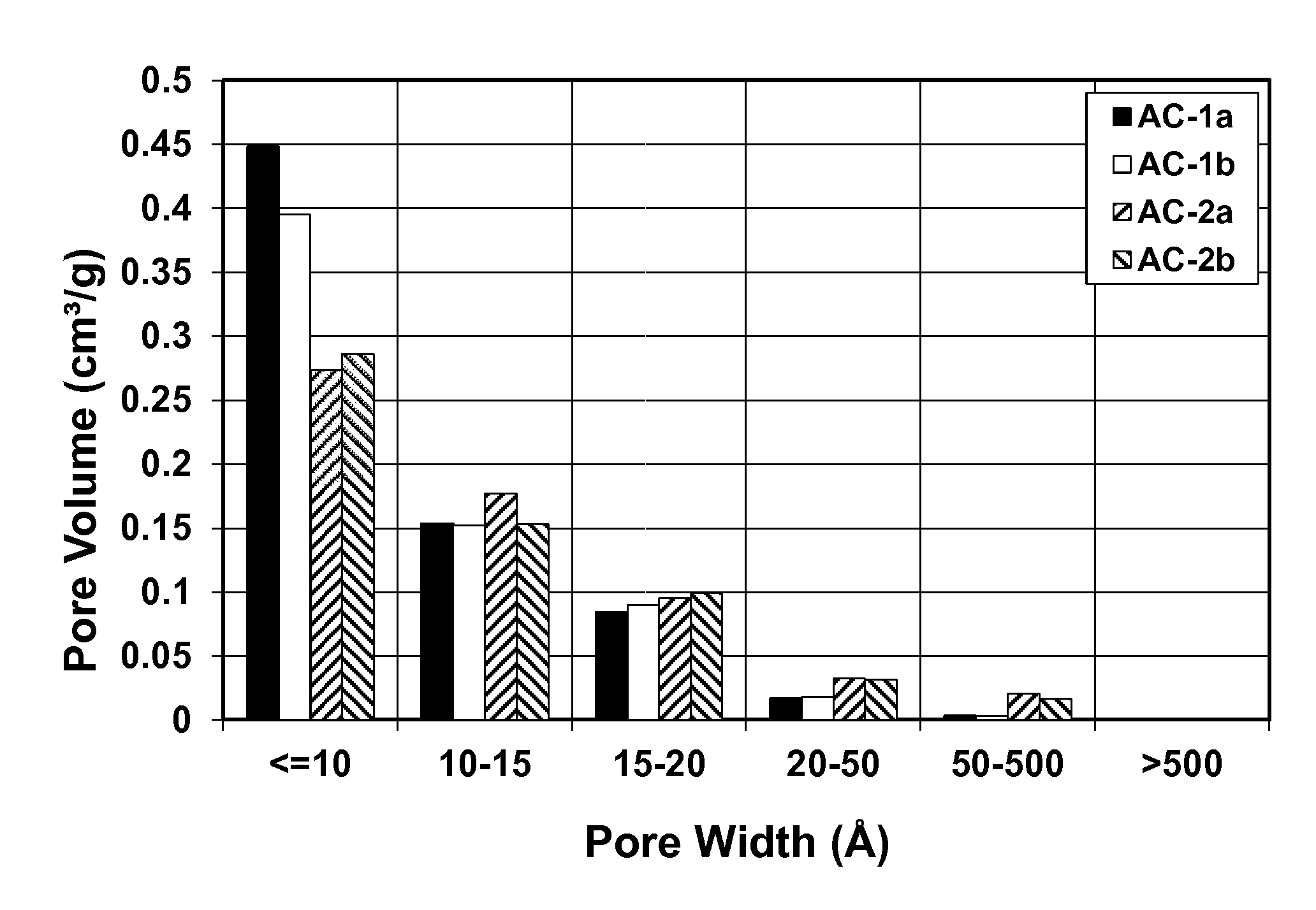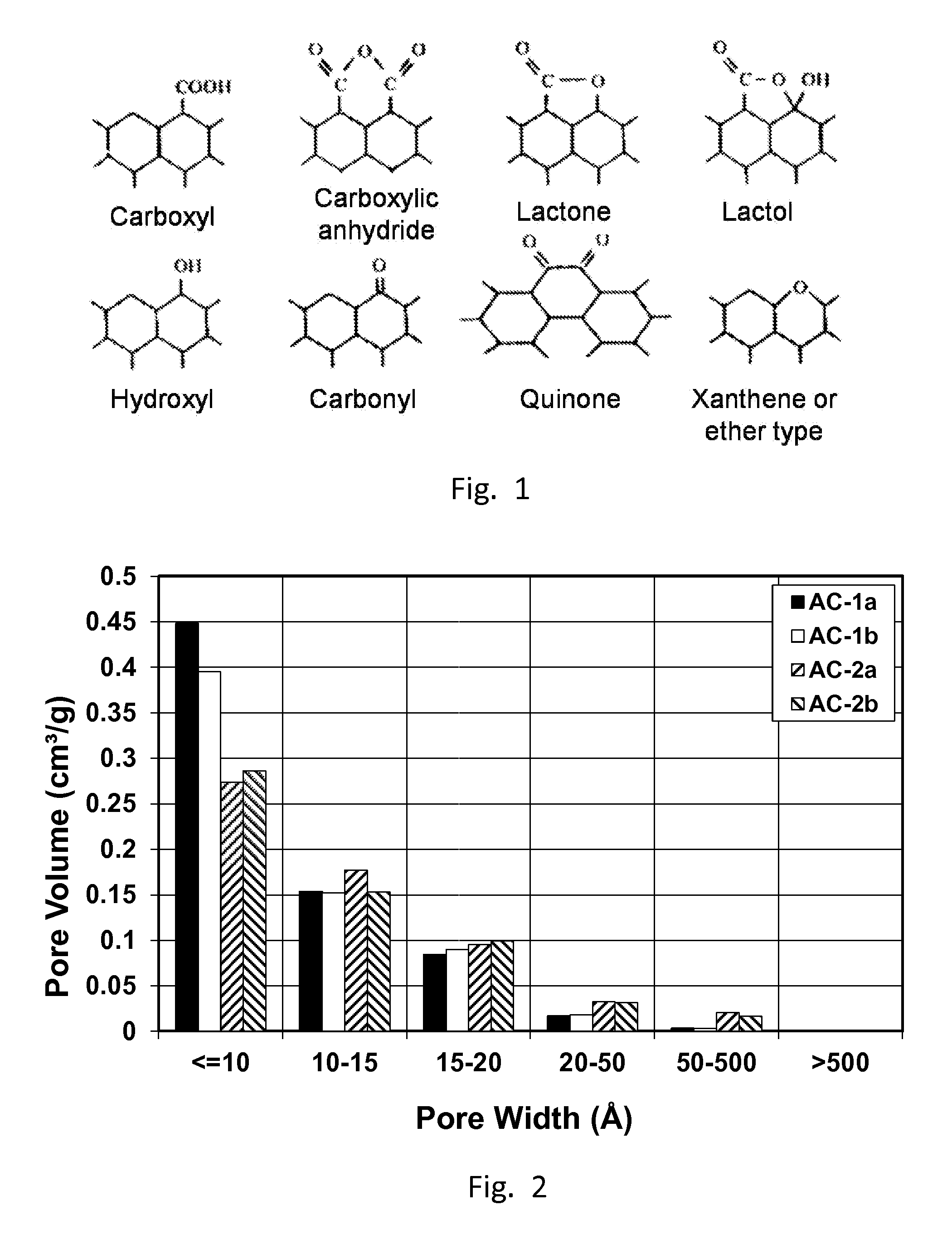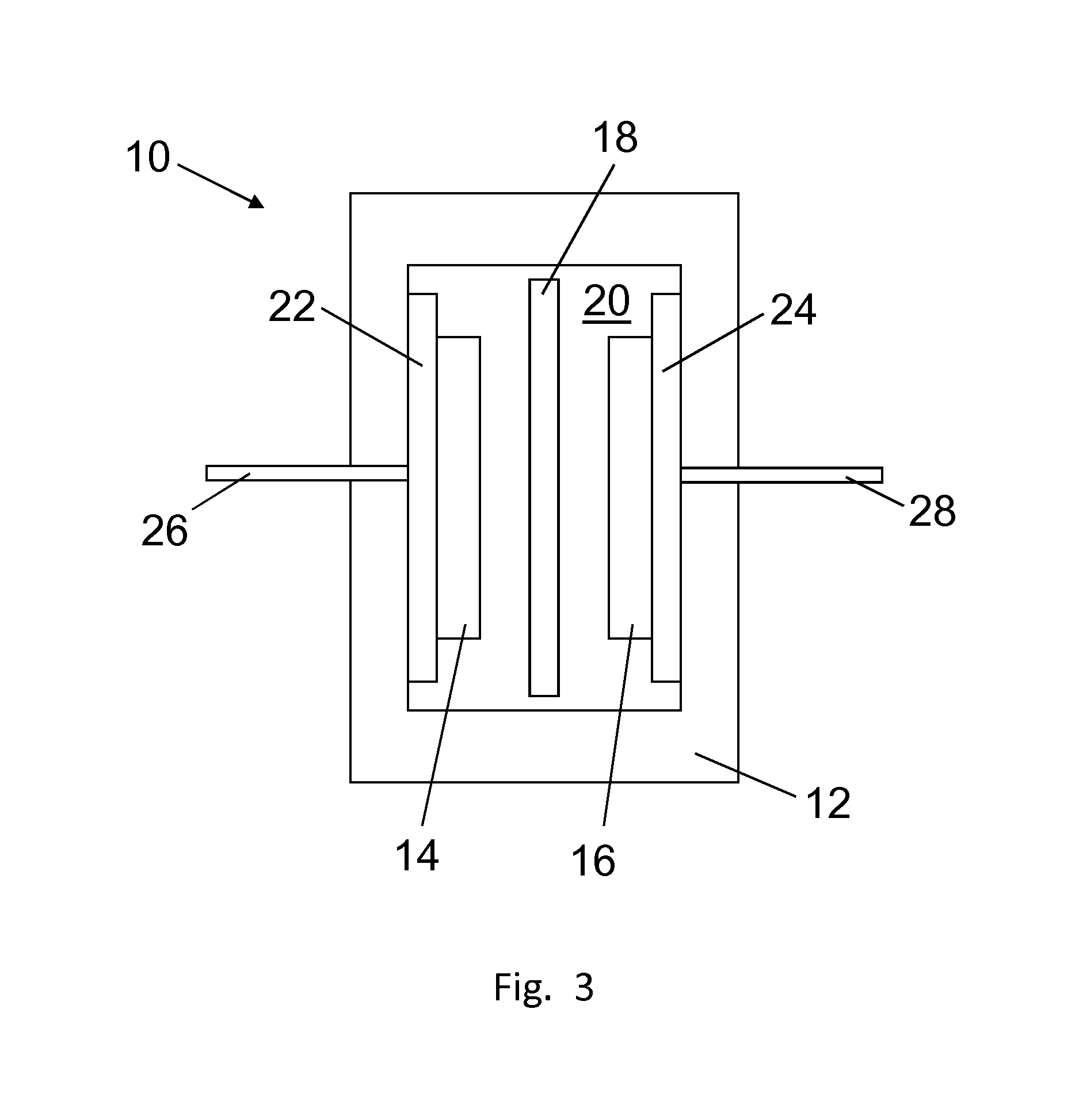High-voltage and high-capacitance activated carbon and carbon-based electrodes
- Summary
- Abstract
- Description
- Claims
- Application Information
AI Technical Summary
Benefits of technology
Problems solved by technology
Method used
Image
Examples
example 1
[0059]Wheat flour (8000 g) is placed in a graphite crucible and heated in a retort furnace (CM Furnaces model 1216FL). The furnace temperature is increased at a heating rate of 150° C. / hr from room temperature to 800° C., maintained at 800° C. for 2 hrs, and then allowed to cool down naturally to 70° C. or less. During the foregoing heating / cooling cycle, the furnace is purged with N2.
[0060]As a result of heating under flowing N2, the wheat flour is carbonized and converted to a carbon material. The carbon can be ground to a powder using a hammer pound, pulverization and vibramilling. The ground carbon powder can have a particle size (d50) of 10 micrometers or less (e.g., 1, 2, 5 or 10 micrometers).
[0061]The powdered carbon (550 grams) is mixed with 1210 grams of KOH powder. The carbon / KOH mixture is placed in SiC crucibles (Hexoloy® SA grade) and heated in a retort furnace. The furnace temperature is increased at a heating rate of 150° C. / hr from room temperature to 750° C., mainta...
example 2
[0067]A commercially-available steam-activated carbon derived from coconut shells was used to prepare a second activated carbon material.
[0068]In one embodiment, the steam-activated carbon was used as received and designated as Sample AC-2a. In another embodiment, the steam-activated carbon was washed and filtered in dilute HCl and DI water until pH neutral, followed by heat treatment under 1% H2 / N2 purge at 900° C. (similar to Sample AC-1b). The resulting carbon was designated as Sample AC-2b.
[0069]The activated carbon samples were characterized for total oxygen content using an elemental analyzer. The content of oxygen-containing surface functional groups was measured using Boehm titration. Results are summarized in Table 1 together with the oxygen content of the carbon black used to form the carbon-based electrodes.
TABLE 1Oxygen and surface functional group content of activated carbonCarboxylic+Lactone+DFT poreTreductionOxygenAnhydrideLactolHydroxylBETvolumeSample[° C.][wt. %][mm...
example 3
[0080]The total oxygen content of commercially-available carbon black (Black Pearls®, Cabot Corporation, Boston, Mass.) was reduced from 1.3 wt. % to about 0.4 wt. % by a reefing step that included heating the carbon black at 675° C. in a forming gas ambient (1% H2 in N2).
PUM
 Login to View More
Login to View More Abstract
Description
Claims
Application Information
 Login to View More
Login to View More - R&D
- Intellectual Property
- Life Sciences
- Materials
- Tech Scout
- Unparalleled Data Quality
- Higher Quality Content
- 60% Fewer Hallucinations
Browse by: Latest US Patents, China's latest patents, Technical Efficacy Thesaurus, Application Domain, Technology Topic, Popular Technical Reports.
© 2025 PatSnap. All rights reserved.Legal|Privacy policy|Modern Slavery Act Transparency Statement|Sitemap|About US| Contact US: help@patsnap.com



